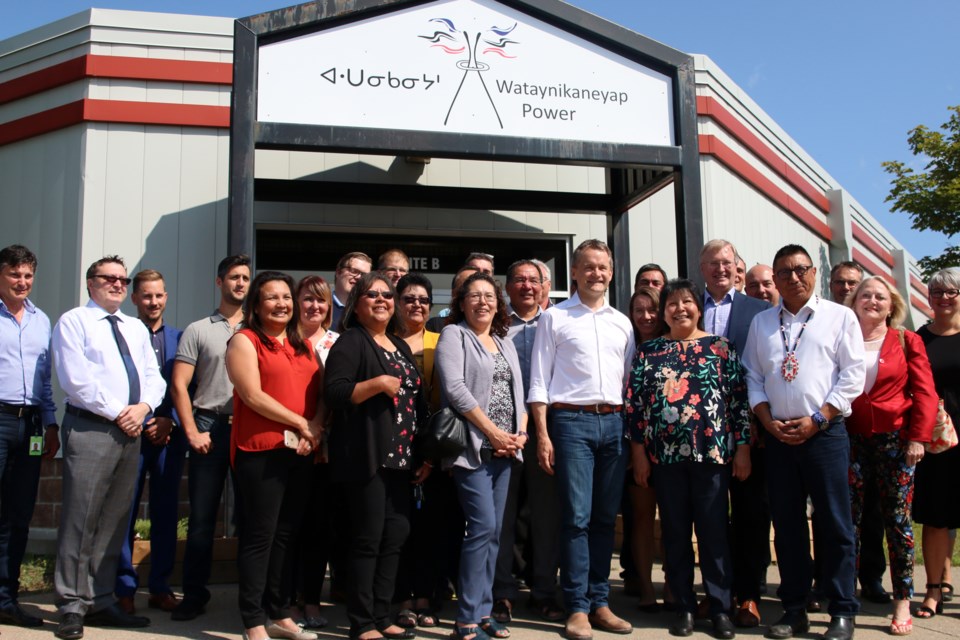FORT WILLIAM FIRST NATION, Ont. - More than a dozen communities will soon be connected to the ‘line that brings light’ after the federal government and 24 partnering First Nations finalized the terms of the $1.6 billion Northern Ontario Grid Connection Project.
Seamus O’Regan, Minister of Indigenous Services, was in Fort William First Nation on Monday to formalize the Canadian government’s support for the project with Wataynikaneyap Power, which he calls monumentous.
“Not only is it a $1.6 billion project involving the Canadian government and the Ontario government, this is one that is Indigenousled and will eventually lead to full Indigenous ownership,” he said. “And that’s really important. That is the way things should be.”
The federal government committed funding in March 2018 for the Northern Ontario Grid Connection Project to connect 17 First Nation communities between Ignace and Red Lake to the Ontario power grid. Last December, Pikangikum First Nation became the first community connected to the grid, ending its reliance on diesel-powered generators.
“Basically, what this allows us to do is eventually, is it is Indigenous led at the moment, and over the course of years, Indigenous parties will be able to take over control of the project itself.”
The project was more than 10 years in the making and involves 24 First Nation partners of Wataynikaneyap Power, with industry partner, Fortis, a Newfoundland and Labrador based utility company.
“I see the line to the finish line where we can begin construction,” said Margaret Kenequanash, chief executive officer with Wataynikaneyap Power. “We are so close to having this done and we are hoping to see shovels in the ground this fall.”
Kenequanash added environmental assessment approvals have recently been received and there are ongoing discussions with contractors that she expects will be finalized in the near future. With work expected to begin this fall, Kenequanash said the entire project should be complete by 2023 and no later than 2024.
Work on the 1,800 kilometres of transmission line to connect the communities is expected to create nearly 800 jobs and First Nation leaders are hopeful it will provide ongoing opportunities for Indigenous youth in the north.
“We have been training some young people from up north who could potentially work on this project and preparing them,” Kenequanash said. “There are a number of trainings that are happening today. We recently graduated a youth mentorship program where we are encouraging the youth to pursue various opportunities in energy and hopefully start the various training that is required for them to be able to be part of the job.”
Eliezar McKay, chairperson of First Nation Limited Partnership and a resident of Wunnumim Lake First Nation, added that the 24 partnering First Nation chiefs wanted to see the project benefit the young people in the region.
“What this means is, especially Opiikapawiin Services LP where the chiefs stated they wanted meaningful participation in the project, so Opiikapawiin Services LP is developing job readiness to get our young people to be trained and go to work with this project,” he said.
Aside from the economic opportunities, the transmission lines will bring to the First Nation people in Northwestern Ontario, it will also end decades of being dependent on diesel-generated power, which can be unreliable and pose safety risks to a community.
“What it will mean for us is we won’t have to go through blackouts when the power shuts down, or worry about fuel deliveries,” McKay said. “When the power goes out, it becomes a boil water advisory right away.”
“I always say if there is a power outage, it comes to the health and safety of the people, the water, the food, the shelter they have gets compromised,” Kenequanash said. “So there will be an improvement to that.”
